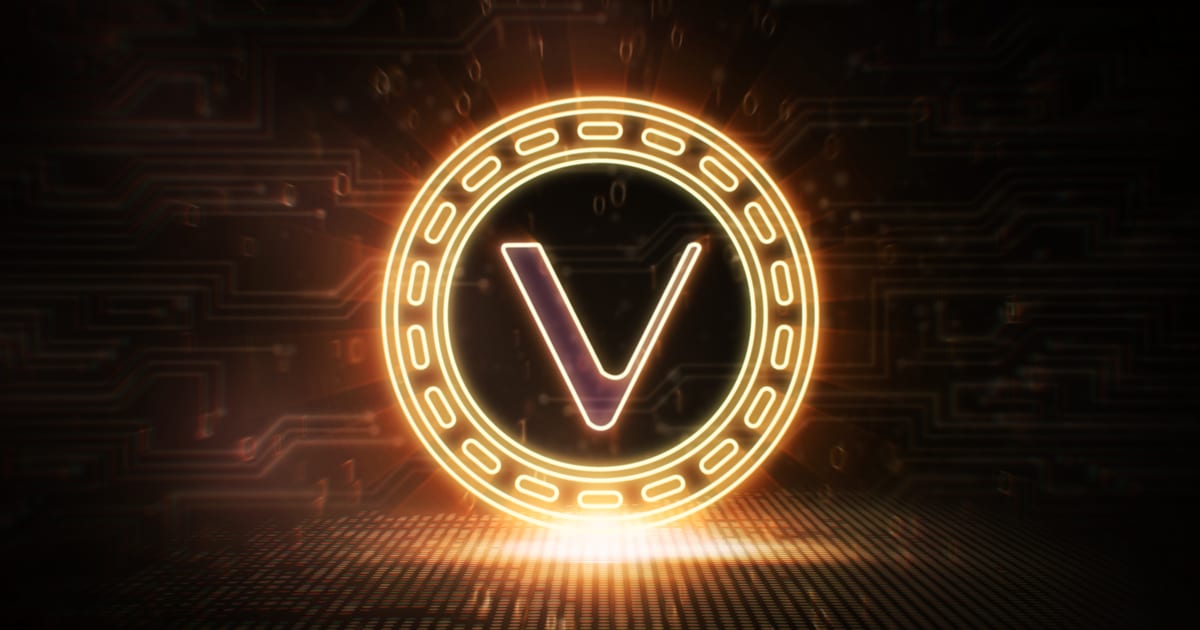What is VeChain?
VeChain was founded in Shanghai in 2015 by the former CIO of Luis Vuitton China, Sunny Lu, as a blockchain to improve business processes and supply chain management.
VeChain was founded in Shanghai in 2015 by the former CIO of Luis Vuitton China, Sunny Lu. It is a blockchain platform designed to improve business processes and supply chain management via more efficient information sharing.
While many blockchains are purposed for financial gain through improving and marketing the underlying technology to attract investors for their cryptocurrency, VeChain’s value lies in serving existing businesses by providing blockchain-as-a-service (BaaS) via ToolChain, a platform that allows businesses to make use of their underlying blockchain.
VeChain aims to increase blockchain adoption by demonstrating to businesses the value that can be had by leveraging distributed ledger technology to enable a transparent information flow, efficient collaboration, and high-speed value transfer.
VeChain’s Blockchain
Initially launched on Ethereum’s blockchain, VeChain soon developed its own blockchain VeChainThor (VET) and rebranded in 2018.
The blockchain is based on a proof of authority (PoA) consensus protocol, whereby VeChain’s steering committee authorizes individual nodes, referred to as Authority Masternodes (AM), to update the chain. In order to become a validator or AM, one must disclose their identity, and therefore reputation, to ensure that they will act honestly.
Block producers are chosen randomly according to an algorithm based on AM’s VET holdings and KYC (identity disclosure). After each AM produces a version of the block, the block that has been approved the most by the others is chosen as the finalized version to be updated to the blockchain.
Governance is achieved by Masternodes in a centralized fashion, who retain voting privileges that allow them to vote on decisions affecting the blockchain. This system, therefore, combines a centralized voting protocol with a decentralized blockchain framework.
According to VeChain’s whitepaper, a PoA uses less bandwidth for faster transaction rates and is more scalable than other blockchain protocols.
Economic Model
Because cryptocurrency is inherent to blockchain technology, and businesses will have to pay to use VeChain’s blockchain-as-a-service platform, it is important to offset the effects of the currencies’ volatility so that businesses don’t have to worry about price fluctuations.
To create this buffer zone, VeChain created two tokens, VET and VeChain Thor Energy (VTHO). VET is a standard value-transfer token that can be used for trading, staking, and creating VTHO, while the latter is a “gas” that can be burned to perform transactions on the blockchain and to execute smart contracts. Having VET is necessary to generate VTHO, which is produced at a certain rate over time depending on how much VET one has. Basically, this means that conducting transactions on the blockchain is free, as long as you hold some VET and the amount of energy required is lower than the amount generated. However, to perform large transactions on the blockchain, such as running a DApp, one must hold a larger amount of VET.
VeChain’s “Business Consensus”: Value for Businesses and Use Cases
VeChain has supported businesses in agriculture, retail, energy, assurance, logistics, and the automobile industry.
The platform has helped track products from all stages of the supply chain, monitoring their quality, authenticity, transport medium, and even temperature, all the way from the manufacturing facility to the end customer, building trust between businesses, and allowing for greater market transparency.
To do this, VeChain uses Radio Frequency Identification (RFID) sensor tags that broadcast information onto the blockchain in real-time, allowing for greater quality control and customer service, and giving businesses and customers access to a products’ entire lifecycle.
VeChain has partnered with several big companies, including accounting giant Price Waterhouse Coopers, Jiangsu Electronics, and car company Renault.
In the automobile industry, for example, VeChain’s blockchain enables car brands to assign digital passports to individual vehicles to monitor their entire lifecycle, and to assess the quality and authenticity of all their separate parts.
The data acquired by VeChain is broadcast to the immutable blockchain, where it can be shared with third-parties like insurance companies who can use the data to set a suitable insurance rate for that driver, depending on their driving habits and overall maintenance of their car.
Conclusion
VeChain’s goal is to not only streamline and organize businesses’ data storage and supply chain management processes, but to also act as the central information storage and infrastructure hub of the Internet of Things (IoT) in the near future. The technical consensus of blockchain technology was the first phase, according to their white paper, then business consensus, and finally community consensus. VeChain is already in the second phase.
Image source: Shutterstock
